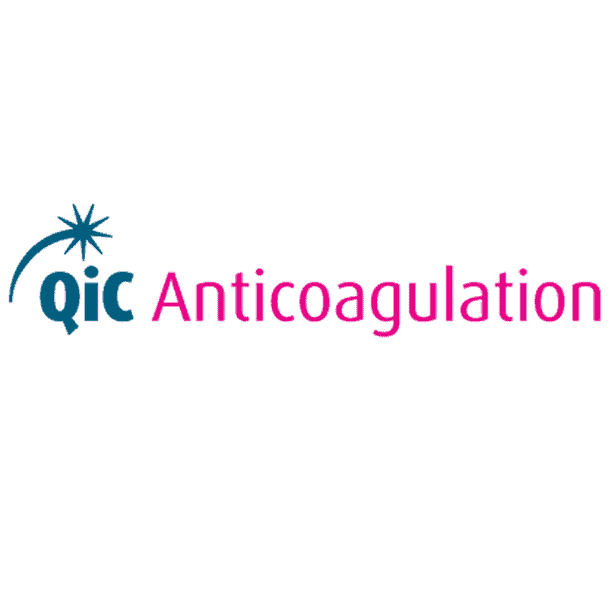Summary
The team formulated their community service to fit with the borough of Hounslow’s priority of bringing care closer to home. They work with an often elderly patient population to help them manage their condition safely and effectively in the community, so ensuring access to the service for this vulnerable group of patients was key. Delivery was changed from a telephone-based service to one that worked face-to-face on first-name terms with patients.
The team provide leaflets, tailored dietary and medical advice, and highlight other patients’ success stories. The model they developed was a cost-effective one that allowed them to deal with a substantial workload and showed they could stabilise patients’ anticoagulation management in a tailor-made way.
Challenge
In 2011, a business case was put forward by the local CCG for a cost-effective solution for anticoagulation in Hounslow, looking at the advantages of care closer to home. The idea was that a responsive and personal service would create patient satisfaction, which in turn could drive patients to continue their care in the community – despite them being used to a hospital setting. Expertise was not available in the community to take on this laborious task, and a significant number of patients were left out for those practices that did not sign up. A proposal for a hub and spoke model led to the development of the St David’s Practice Outreach Anticoagulation Clinic in Feltham. The outreach clinics were tasked to monitor patients whose practices did not provide anticoagulation cover, for unstable patients in practices that did provide anticoagulation and also to initiate anticoagulation in the community for patients with a diagnosis of non-valvular atrial fibrillation. A large number of patients has been taken on from practice and hospital discharges: the current register list is made up of 81 patients, down from a peak of 178. This model of care is time consuming, and there are significant risks with a drug like warfarin.
Objectives
To develop a team outside of trusted GPs or consultants by putting patients at the heart of decision making. To educate, listen to concerns, respond in an empathetic way with the patients’ agenda at hand, but also to provide the latest evidence-based methods as well as success stories of our other patients to produce a tailor-made plan. This would lead to a better joint management plan for long-term care effectively, providing care closer to home from a community setting. The aim was to make patients feel that the team would provide care equal to, if not better than, their current provider – and developing standardised policies to enable the replication of this process for a larger cohort of patients.
Solution
The team’s ethos was to be responsive, encourage ease of access, educate all patients at every opportunity, empower and tailor treatment to the individual. The team was educated on theory and practice evidence-based medicine, with GPs reviewing every International Normalised Ratio (INR) processed by the health care assistants and nurse, so patients are assured of appropriate clinical input. All clinicians provide an array of learning tools from verbal, to written and pre-printed leaflets, and family members are encouraged to attend appointments. District nurses are involved in the process if there are memory or compliance issues and this approach has led to a variety of needs being addressed in the community: for example some patients would take warfarin at any time in the day that was convenient to them; involvement of social services with increased packages of care; referring back to GP for consideration of alternative anticoagulation where a patient struggles to achieve their time in therapeutic range (TTR) – that is, the correct dosage - with input described above. Simple strategies for reminders are encouraged: for example, an alarm set on a mobile phone or carers reminding patients that medication is still due to be taken. The ownership, better outcomes and fewer reviews have led to a better satisfaction and experience with our patients.
Results
Patients’ TTR has been measured at 85% and above, while the cost of services is a fraction of that when they were provided by secondary care - something in the region of 60% per patient for usual monitoring. It is a cost-effective process, with more to be gained by economies of scale if expanded – which is possible since it is relatively easy to initiate, replicating a single general practice model.
Learnings
The team has presented its learnings in a mnemonic:
W Wafarin-related sharing of success stories and significant events
A Allow time for patient engagement at every opportunity
R Running a multidisciplinary approach
F Family – involve family and carers in management plan
A Agenda - must be patient-led and given plenty of time
R Regular meetings with team - aim for monthly
I Internet - online learning compulsory for all staff annually
N Nurture ownership
Evaluation
Patient experience is measured in an annual qualitative survey of all outreach patients, with scores of Poor, Good and Excellent given, plus comments under various headings to allow feedback on areas of care provided. Satisfaction is high, with the survey for 2014-15 saw 96% of patients rate the scheme’s responsiveness as ‘Excellent’, and many comments praising the care given and the trust it has engendered.


